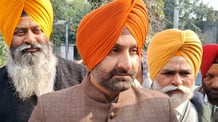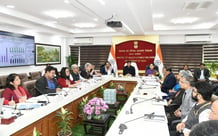Subscribe to our newsletter!
A growing body of scholarship also recognizes the need to go beyond economic and demographic losses as a result of the pandemic, and recast our intellectual gaze on the long-term consequences of ruptures in social trust.While we remain optimistic about the laudatory appeals to social capital, we should be wary of what the American political scientist Robert Putnam called its “dark” side. The recent news of stigma and ostracism faced by frontline healthcare workers such as doctors and paramedics in our country is perhaps social capital’s undesirable side breeding – forceful self-surveillance and suspicion of those who are believed to contravene community norms.
Given the scenario, the suggested way forward for consideration of policymakers is to leverage social capital and use it to promote good behavior. And the same would rest,firstly, on building general trust in government;secondly, by increasing trust, specifically in the health system to boost community compliance and cooperation; thirdly, to adopt ‘visible signaling’ by prominent individuals and political leadersby communicating to the public how to continue social distancing practice by appearing in public with a mask on towards cultivating positive behavior until it becomes a societal norm; andfinally, by tapping intra-network channels engaging with heads of communities and associations to communicate with citizens and report widespread implementation deviation on the ground.In unsure circumstances, for example, a pandemic, compliance gives off an impression of being founded on feeling and general inclination towards the government, as residents may not completely measure messages from the legislature in a situation with a serious extent of unusualness. In this way, it is basic that public messaging with respect to Covid-19 rules and guidelines is clear, available, and quite far, reliable across public health administration frameworks. These methodologies would set up policymakers to manage the following emergency, and the one from that point onward, whatever they might be, and anyway much disturbance they may cause.Globally, crisis response is measured in terms of resilience articulated through strong leadership, efficient mitigation structures with functional interdependencies but above all, the whole of society approach.
The anticipated Unlock 4 phasewith fresh guidelines forlockdown in the containment zones onlytill 30 September, has been announced by the Union Government.The decision comes at a time when the country’s economy has hit rock bottom; and the governments, at the Union and States have to fashion a better Covid-19 response that is more economic-friendlier along with reducing their epidemiological focus from district to blocks or maybe municipal wards. Nonetheless, the current stage of unlocking will be more crucial than the preceding three stages as a number of activities will be resumed from this month, in the face ofthe Covid-19 case spikein the country, at the fastest pace in the world. Given the situation, the public health administration, along with the ongoing medical interventions, are to bank on the social responsibility of their citizens to comply with mask-wearing, social distancing,among others, as means of preventive strategies. Evidently, the key margin to contain the spread of the pandemic is human behavior, i.e. willingness to practice ‘mask-wearing’ and ‘social distancing’ in public spaces; and hence additional thrust has to be given on social capital of the country, with focused bonding (group networking), bridging (action networking) and linking (policy networking).
From a hypothetical perspective, social capital, the spread of Covid-19, and regulation strategies connect in different ways. High social capital is related with higher social duty.However, territories with high social capital are additionally known to be all the more socially dynamic, lively, and better associated. When the significance of conduct ‘regulation’ standards turns out to be more striking,one would then anticipate that these regions should receive willful control measures (social distancing) all the more quickly, prompting a relative reduction in new diseases.
The idea of ‘social capital’ is a popular export of sociological theory to development policy, public health, democracy, and organization research. It has its conceptual origins in 19th-century philosophy. The French sociologist Emile Durkheim, with his emphasis on group life as an antidote to anomieandsuicide, and Karl Marx’s analysisof class consciousness and solidarity in the industrial proletariat, show early traces of the notion of social capital.The Nobel Prize-winning economist Amartya Sen has probably offered the most clarifying contemporary sense of the idea: his so-called capability approach emphasizes citizens’ access to the civic goods that social capital creates. The concept, however, is not without opposition given its definition and questions about how it can be measured. For example, is it a property of individuals or of memberships and/or aggregations?Notwithstanding these academic quarrels, the most enduring impact of the concept of social capital is its role in understanding civic engagement and trust in socio-political institutions, both of which have implications for health.Borrowing evidence from a range of studies , especially from poorer contexts, this line of inquiry shows that confidence and trust in representatives of formal institutions, such as the government, law enforcement, social work, healthcare providers, has a major bearing on community welfare.
For example, countries that are succeeding better in their containment efforts, such as Singapore, South Korea, Taiwan and, more recently, China, are also countries that seem to show more confidence in their public institutions. Even in India, the southern state of Kerala, while being subject to resource constraints but possessing high literacy among citizens, contained its first Covid-19 by preemptively formulating comprehensive set of public actions – government actions that were supported and supplemented by the state’s citizens. This was reportedly achieved by leveraging and reinforcing the citizen’s public trust in state. It is then enticing to inquire as to whether the communitarian appeal of physical distancing can yield meaningful outcomes in settings known to have elevated levels of certainty and trust? Which nations are bound to prevail with regards to building trust and open consolation, accordingly improving consistence, during circumstances such as the present? What’s more, would it be advisable for us to trouble at all with social capital under these uncommon conditions?
Although not meant to offer any causal claims, the canonical World Values Survey (WVS) offers some insightful leads about the promise and limits of social capital. In the survey, Asian countries show high levels of confidence in institutionalized systems (government, press, etc.) and also report high levels of neighborhood social capital. In India, sections of the media and the political class have evoked patriotism, especially with frequent use of combat metaphors. Prime Minister Narendra Modi assured the people in a national address that the coronavirus “war” will likely be won in 21 days, compared to the 18-day battle in the Mahabharata. It is interesting to see India and China reporting higher levels of patriotism in the WVS survey.












